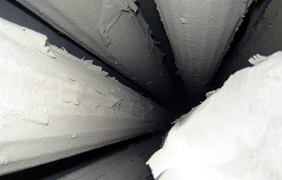Introduction to Baghouse / Fabric Filters
Fabric Filters (FF), or baghouses, are air pollution control devices that work by removing particles from the gas stream of industrial or electrical production processes by collecting them on the surface of filter bags. Since the late 1970’s, with the introduction of high-temperature fabrics (> 350 degrees Fahrenheit), the baghouse has become increasingly popular, especially in the utility market. In contrast to ESPs, the baghouse is a highly efficient particulate collection device regardless of the incoming dust loading or particle size. Also, with stricter EPA regulations for the removal of gases and heavy metals, the baghouse offers adaptability as a dry collection device using absorbents.
Baghouses have the capacity to remove 99.99% of even stubborn sub-micron particles. As dust-laden gas enters the baghouse compartment(s), larger particles drop out into the hopper, and smaller particles collect on the filter bags/media, forming a layer or cake; clean gas passes through the media. When the dust layer get thick enough to substantially restrict flow through the media (referred to as pressure drop or ˆ†P), cleaning is started. Cleaning can be done while a baghouse compartment is still filtering (online) or with the compartment isolated and not filtering (offline), depending on baghouse type and cleaning strategy.
Helpful Resources
KnowledgeBase: Types of Baghouses
KnowledgeBase: Common Baghouse Misconceptions
Our Capabilities: Baglife & Troubleshooting
Our Capabilities: Intelligent Baghouse Cleaning System



